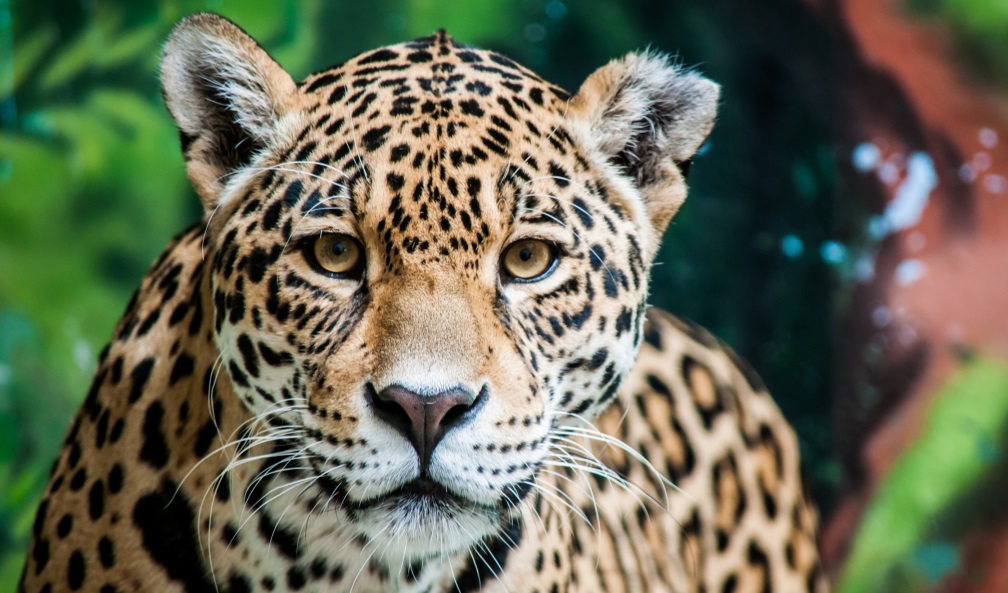A group of scientists say now is the time to talk about reintroducing jaguars (Panthera onca) into the United States.
In a study published today in the journal Conservation Science and Practice, the authors provide a prospective framework for this effort and describe “righting a wrong” done to “America’s Great Cat” in the Southwest more than 50 years ago.
The big cats lived for thousands of years in the central mountains of Arizona and New Mexico but were driven to local extinction by the mid-20th century, in part because of killing by government hunters.
Authors of the study include a diverse set of scientists from the Wildlife Conservation Society (WCS), Center for Landscape Conservation, Defenders of Wildlife, Wildlands Network, Pace University, Universidad Autónoma de Querétaro, Life Net Nature, and the Center for Biological Diversity.
In March, a separate study suggested that an area in central Arizona and New Mexico spanning 2 million acres (82,000 square kilometers) can provide potentially suitable habitat for 90 to 150 jaguars.
This area, roughly the size of South Carolina, was not considered in the 2018 US Fish and Wildlife Service Recovery Plan for the jaguar. That plan considered only habitat south of Interstate Highway 10 (an artificial boundary considering historic jaguar records north of that) and therefore concluded there was habitat for only six jaguars in the U.S.
However, habitat destruction, transportation infrastructure, natural constrictions in the landscape, and the border wall mean that natural reestablishment of female jaguars from source populations in Mexico to this recovery region is unlikely over the next 100 years.
“The jaguar lived in these mountains long before Americans did,” said Eric Sanderson, WCS Senior Conservation Ecologist and lead author of the study. “If done collaboratively, reintroduction could enhance the economy of this region and the ecology of this incredible part of jaguar range.”
The study notes some key aspects of the reintroduction effort to be discussed with relevant officials and the public in central Arizona and New Mexico, noting that:
- The region is a habitat unique in all of the jaguar’s range, representing a special and valuable part of jaguar’s ecological diversity;
- The Central Arizona and New Mexico Recovery Area (CANRA) is vast, covered with suitable vegetation, and well populated with potential prey. Given its elevation and latitude, it may provide an important climate refuge for the species in the future, though further research is required;
- The majority of the land is managed for the public good, mainly (68%) by the US Forest Service, Bureau of Land Management, and National Park Service, with several large designated wilderness areas. Only 381,000 people live in this area, primarily in towns and cities. The most important economic activities there are government expenditures, accommodation and food services, outdoor recreation, health care and social assistance, and retail trade;
- The mountains of central Arizona and New Mexico are part of the ancestral and reservation lands for a number of Native American Nations. Currently two Tribal nations, the White Mountain Apache and the San Carlos Apache, manage nearly 12 percent of the CANRA’s land area, including wildlife and ecological systems; and
- Reintroduction would replace a historic member of the species assemblage of the region. U.S. government agents and private citizens hunted and poisoned the jaguar for most of the 20th century. As a result of persecution here and elsewhere, jaguars were listed under the U.S. Endangered Species Act. Today we have tools to facilitate coexistence and avoid and mitigate conflict. Reintroduction efforts, such as the Iberá Project in Argentina, have demonstrated the potential. Reintroduction could contribute to the recovery and eventual removal of the jaguar from the Endangered Species List, especially if the recent recovery plan were revised to consider this area and the possibility of reintroduction.
“This represents a turning point for this iconic wild cat, identifying a path forward for restoration of the jaguar to its historic range in the United States,” said Sharon Wilcox Ph.D., Texas Representative for Defenders of Wildlife. “It should serve as the starting point for a renewed conversation among stakeholders.”
The authors of the study conclude that reintroduction of jaguars should be examined as a viable alternative.
“The Southwest’s native wildlife evolved with jaguars,” said Michael Robinson of the Center for Biological Diversity. “They have a storied and vital place in our canyons and forests, so we should plan an intelligent and humane reintroduction program.”
The authors believe that restoring jaguars can be a net benefit to people, including culture and local economies, and nature and would represent the return of an original part of the U.S. fauna.
Wildlands Network Mexico and Borderlands Program Director, Juan Carlos Bravo concluded: “Restoring jaguars to the northernmost portions of their historic range is an issue of importance for both the U.S: and Mexico, our paper provides an initial step for both countries to draft together a roadmap of what that major rewilding effort may look like.”
The study focuses on on five dimensions of the reintroduction project: conservation rationale, history, ecological context, human context and practical considerations.
Photo via Pixabay.

